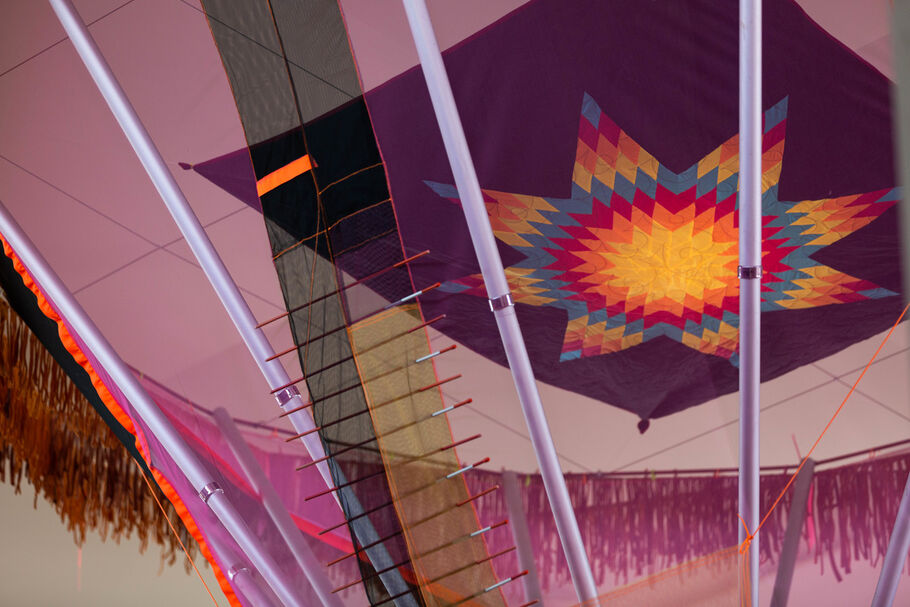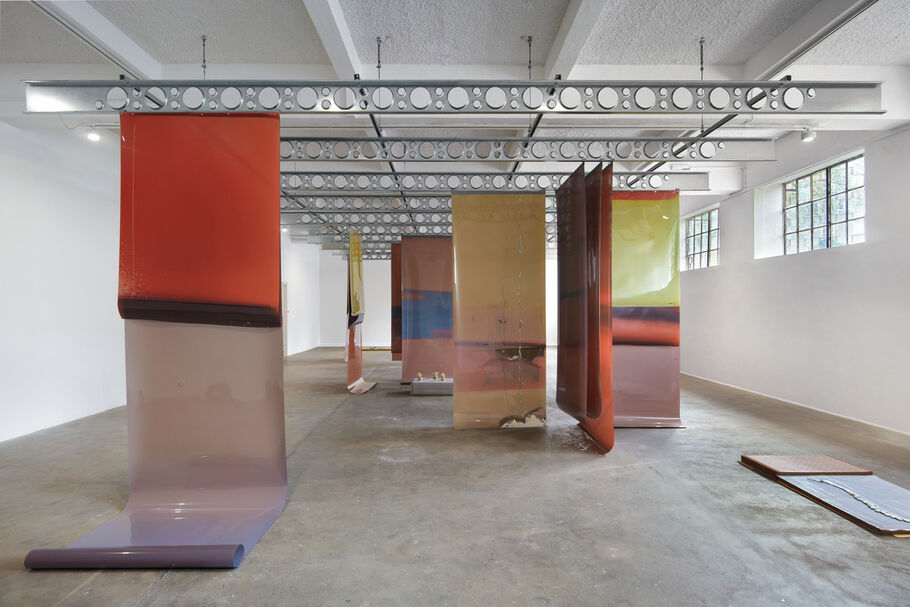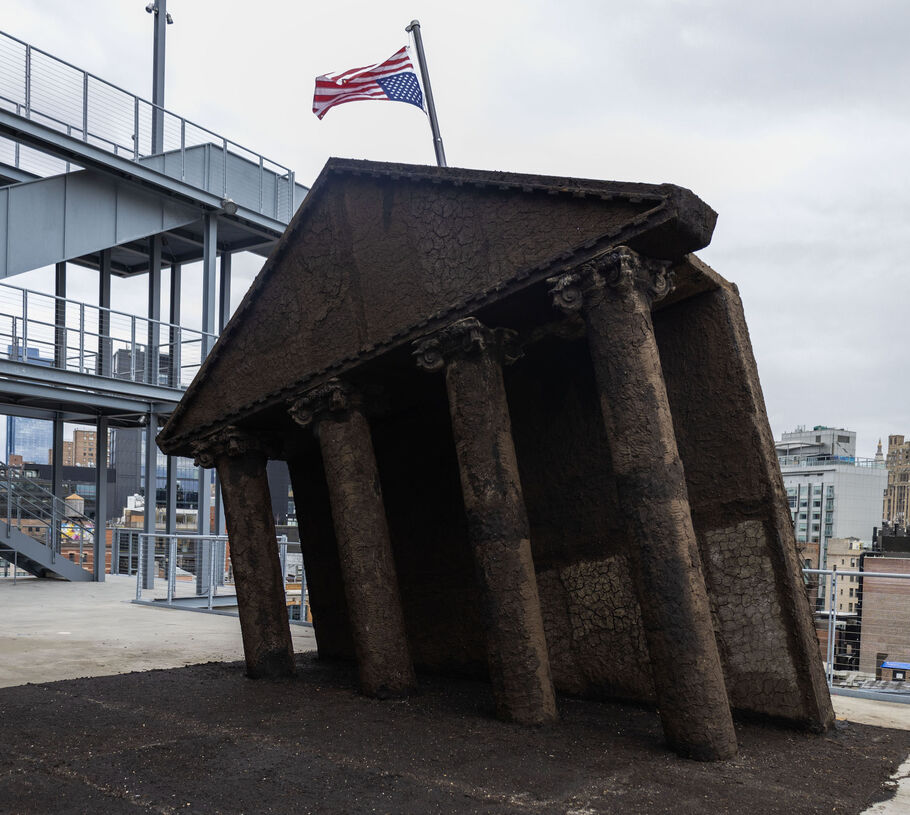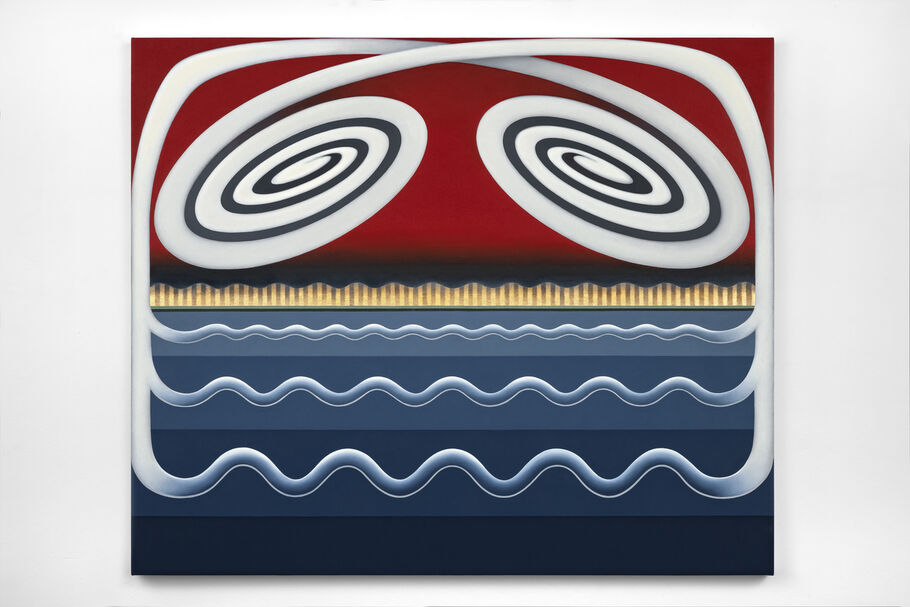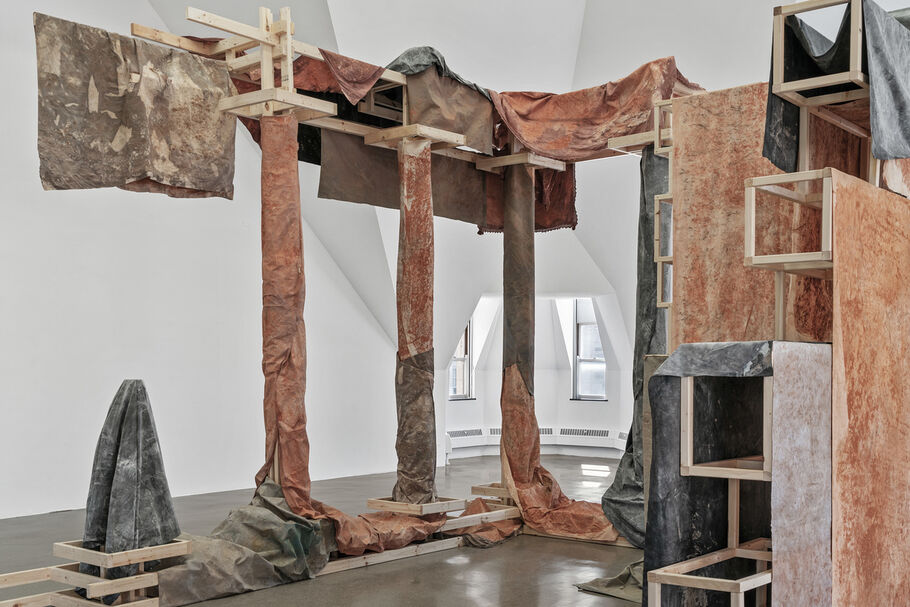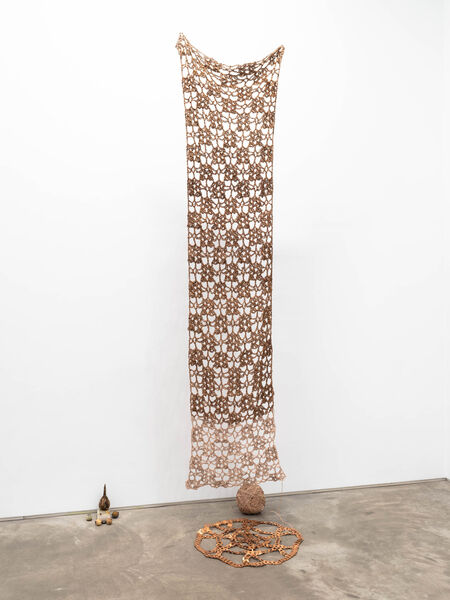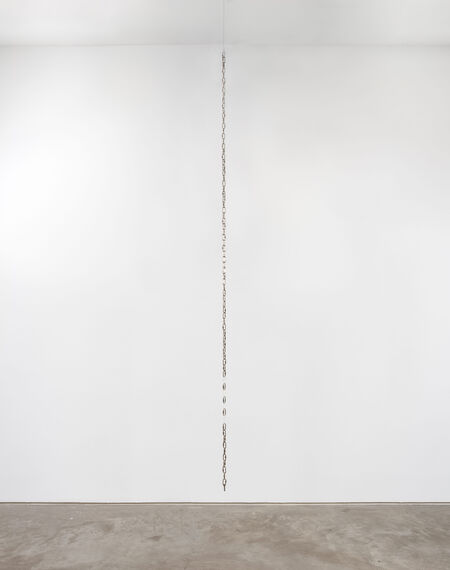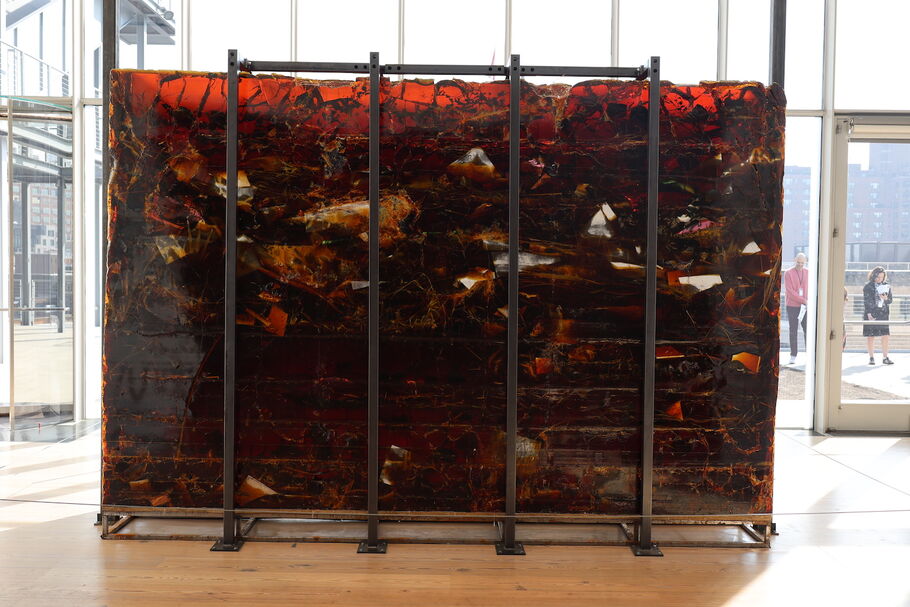8 Breakout Artists of the 2024 Whitney Biennial
Considered the most important exhibition in the United States, the Whitney Biennial is back for its 81st edition, promising visitors a look at some of the rising stars and industry leaders of American art today. “Whitney Biennial 2024: Even Better Than the Real Thing” opens to the public on March 20th (with member previews this week) and features 71 artists and collectives selected by curators Chrissie Iles and Meg Onli, along with Min Sun Jeon and Beatriz Cifuentes. In addition to the exhibition, the biennial features performance and film programs, the former curated by Taja Cheek, while Korakrit Arunanondchai, asinnajaq, Greg de Cuir Jr., and Zackary Drucker have organized the latter.
Working in an array of disciplines, including painting, sculpture, film, and installation, the artists in the exhibition examine notions of “the real,” and what reality means in contemporary society where lived experiences are fractured, changing, and drastically varied. The creative interpretations address themes including migration, labor, ecological instability, gender, and identity. Many reflect broad historical narratives, including non-Western and Indigenous histories, such as Cannupa Hanska Luger’s sculptural installation that inverts the stereotypical Native American symbol of a tipi, flipping the structure and incorporating Native stories to imagine Indigenous futures. Other works consider urgent issues of bodily autonomy, such as Carmen Winant’s installation of over 2,500 photographs of clinics and professionals providing abortion healthcare.
Materially and thematically robust, the biennial offers insight into some of the most promising creative voices in American art, from the emerging to the established. Here are eight of the breakout artists we expect to see much more following this year’s Whitney Biennial.
Lotus L. Kang
B. 1985, Toronto. Lives and works in New York.
Material instability and ephemerality are common themes throughout the biennial. In Lotus L. Kang’s large, immersive installation In Cascades (2023–24), these concepts come to the fore. Consisting of monumental sheets of photographic film dangling from steel joists along the ceiling, as well as aluminum objects and tatami mats, Kang’s work is inherently portable—each modular component can be packed and moved with relative ease, especially the unfixed tatami mats.
The installation is also malleable and will evolve over the course of the exhibition as sunlight alters the color of the film. Transforming through a process the artist calls “tanning,” the sensitive material acts as a metaphor for the human body, changing as it is exposed to the elements of the world around it. In this light, the artist reflects more broadly on how bodies, memories, and histories are in constant flux. While bodies physically change in reaction to the environment, humans adapt in other ways, altering their identities across space and time.
Kang’s works were recently featured at Frieze Los Angeles with Commonwealth & Council and at Chisenhale Gallery in London.
Kiyan Williams
B. 1991, Newark, New Jersey. Lives and work in New York.
Across the museum’s sixth-floor terrace, Kiyan Williams’s outdoor sculptures also use material as a metaphor for fragility. Visible from the street as visitors approach the museum, the leaning, brown structure of Ruins of Empire II or The Earth Swallows the Master’s House (2024) is a replica of the north façade of the White House made in steel and dirt. Natural materials like soil are common in the artist’s practice, who had their first museum solo show at the Hammer Museum in Los Angeles in 2022, and they often use these materials to consider how earth and land hold memories and act as witnesses to history.
The cracked, tilted form of the eroding White House reflects the fractured political systems of the U.S. Furthering this message, the building is topped with an upside-down American flag. Juxtaposing the fragile material of the earthen sculpture is an aluminum statue of Marsha P. Johnson that stands nearby and holds a sign that reads “power to the people.” Observing the degradation of the White House with an expression that is calm and resolute, the image of Johnson appears as determined in delivering her message as the trans activist was in her lifetime.
Takako Yamaguchi
B. 1952, Okayama, Japan. Lives and works in Santa Monica, California.
Blurring the boundaries between abstraction and representation, Takako Yamaguchi’s oil and metal leaf paintings in the biennial feature seascapes with tubes and curving lines that weave through the composition. Developing and redefining her style since the 1970s, Yamaguchi has always resisted narrow perspectives on art history that favored modernism. Instead, she borrowed elements of various artistic traditions, including non-Western references to Japanese art, such as woodblock prints and decorative screens, as well as Mexican murals, often combining disparate styles in a single composition.
Yamaguchi’s paintings in the show reflect a nuanced view of American art, which the biennial set out to represent, and illustrate the artist’s current interest in reducing forms from nature into abstract shapes and patterns. In these, cylindrical waves extend into the sky in tight swirls, and cascades of rain resemble bristles of a comb. Clouds seem to become waves as suggestions of tornadoes and riptides emerge from the water into tubular braids and knots. The artist describes her process as “abstraction in reverse,” abstracting a familiar form to the point at which it becomes a repeated motif or pattern. Yamaguchi is currently the subject of a solo exhibition at as-is.la in Los Angeles and was featured in a 2023 solo show at Ortuzar Projects in New York.
Dala Nasser
B. 1990, Tyre, Lebanon. Lives and works in Beirut and London.
Fresh off of its debut in the artist’s solo show at the Renaissance Society in Chicago, Dala Nasser’s large-scale installation Adonis River (2023) blends elements of architecture, painting, and sculpture. Relating to the artist’s interest in the rituals and sites of collective mourning, the work considers the complexity of place and grief.
Focusing on the Adonis River (known in present day as the Abraham River), the work consists of columns draped with fabric that the artist colored with natural elements from the area. This includes charcoal taken from the Adonis Cave, where the mythological figure famed for his beauty was killed by a wild boar, as well as the temple erected in his name, and clay from the river banks. Resembling this partially ruined temple, the installation considers the layered significance of Adonis, which has evolved over time and cultures. For Sumerian and Assyrian cultures, he is associated with mourning. In Greek mythology, he is a mortal who dies and is resurrected as a god at the request of his lover, Aphrodite, a story also considered a representation of the origin of spring.
Mavis Pusey
B. 1928, Retreat, Jamaica. D. 2019, Falmouth, Virginia.
One of the few artists in the biennial who are no longer living, Mavis Pusey reflects the exhibition’s exploration of the role of architecture in systems of power. Working in painting, drawing, and printmaking, the late artist used rich colors and bold, geometric shapes to address themes of urban development and the experience of being a Black female abstract artist in the 1970s, when the style favored white men.
While using the language of abstraction, hints of the subjects that inspired Pusey come through—particularly, the suggestions of construction and partially demolished buildings seen in the works in the biennial. Her inclusion in the exhibition is a nod to the history of the site the museum now occupies—as Pusey lived and worked nearby—as well as in the history of the Whitney itself. The artist’s painting Dejygea (1970) from the biennial was also included in a 1971 Whitney exhibition on contemporary Black artists that was criticized for failing on a promise to include Black specialists on the curatorial team.
Pusey’s work was the subject of a solo show in 2022 at The Union For Contemporary Art in Nebraska.
ektor garcia
B. 1985, Red Bluff, California. Lives and works in Mexico City and elsewhere.
Migration is at the core of ektor garcia’s practice. Frequently crossing the U.S.–Mexico border as a child with his family, and now with a studio practice that is itinerant, garcia considers labor and migration in the portable, meticulously woven sculptural installations he creates.
The artist incorporates several materials in these installations, weaving together things like copper wire, waxed thread, and horsehair with shells and glass to stunning effect as light catches the intricate, fine fibers and metals. Some pieces are architectural, resembling portals. Others dangle delicately from the ceiling. garcia blends craft and fine art, teaching himself techniques like crochet, researching Indigenous Mesoamerican objects, and learning from the people he encounters while traveling. The many traditions and legacies of craft he draws from lend an exploratory and communal aspect to garcia’s practice, which he uses to examine his personal life and collective concerns, including gender, colonialism, and queer culture.
garcia’s work was the subject of a 2022 solo show at the Henry Art Gallery at the University of Washington. He was also included in the 2021–22 Prospect New Orleans triennial.
Eddie Rodolfo Aparicio
B. 1990, Los Angeles. Lives in Los Angeles.
In a powerful curatorial move, the gallery just inside the museum, facing Williams’s sculpture of the White House, contains a large, rectangular sculpture that blocks the visitor’s view of the house, revealing only the upside-down American flag fluttering above. Created by Eddie Rodolfo Aparicio, whose work is also the subject of a solo show at the Museum of Contemporary Art in Los Angeles, the sculpture, Paloma Blanca Deja Volar/White Dove Let Us Fly (2024), recalls a border wall. Made of an assortment of materials, including volcanic stone, archival documents, found objects, and cloth, all of which is suspended in dark, rich tree amber, the work is another piece that will react to its surrounding environment, cracking, sagging, and dropping small fragments to the museum floor as the sun and its own weight affect it over time.
Using documents related to military violence against Indigenous people in El Salvador and some written by white activists, Aparicio addresses themes of labor and migration, specifically the Central American and Mexican workers who were brought to the U.S. in the mid-20th century. Amber from trees imported to Southern California around the same time as the migrant workers adds to this connection. With large root systems, the trees damaged the sidewalks over time, leading the city of Los Angeles to remove them, an issue still debated today. Like others in the show, Aparicio considers the ways in which natural materials hold memories—both revealing and concealing evidence of the past, literally embedded in the surface of the amber.
Carolyn Lazard
B. 1987, San Bernardino, California. Lives and works in New York.
At first glance, Carolyn Lazard’s installation Toilette (2024) recalls a reconfigured sculpture à la Donald Judd. Consisting of shiny metal medicine cabinets propped on their sides with their mirrors opened into (mostly) right angles and filled with yellowish Vaseline, the work’s similarities to the Minimalist artist quickly dissipate beyond their shared use of industrial materials. In Lazard’s installation, they use these materials specifically for their layered history and associations with domesticity and care. Throughout the artist’s multidisciplinary practice, which earned them a spot in the 2022 Venice Biennale and a MacArthur Fellowship in 2023, they often repurpose everyday objects to examine gender, race, and the experience of being Black and disabled.
Using items found both in the home and in professional healthcare settings for Toilette, Lazard considers the commercialization of medicine and the acts of care we undertake privately. Inherent in the overlap between health and commerce is the inevitability of unequal access and lack of bodily control.
Lazard’s use of Vaseline is particularly poignant. A relatively opaque material, it fills the void of the medicine cabinets, obscuring the drugs and tools it might hold, a metaphor for the opacity of the healthcare system. However, this opacity can also be viewed as the right to privacy and the importance of not being defined by our health or abilities.

